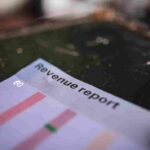Are you ready to take control of your financial future? One of the first steps towards achieving financial freedom is figuring out your “financial freedom number.” This powerful number represents the amount of money you need to cover all your expenses and live life on your terms.
In this article, we will show you exactly how to find your financial freedom number using a simple and straightforward approach. Whether you’re dreaming of early retirement, starting a business, or simply reducing stress about money, knowing your financial freedom number is essential for creating a roadmap toward reaching your goals. Keep reading to discover the key steps involved in determining this crucial figure and start taking charge of your finances today!
How to Find Your Financial Freedom Number
Financial freedom is the ability to live your desired lifestyle without being constrained by financial limitations. It means having enough money and resources to cover your expenses, achieve your goals, and enjoy life on your own terms. To understand financial freedom better, consider the following points:
- Defining Your Goals: Start by defining what financial freedom means to you personally. Identify specific goals such as retiring early, traveling the world, or starting a business.
- Income vs Expenses: Financial freedom is not just about earning more money; it’s also about managing your expenses effectively. Calculate how much money you need each month to cover all your essential expenses and any additional costs related to achieving your goals.
- Creating a Budget: Create a budget that aligns with both short-term necessities and long-term aspirations. Track where your money goes each month and identify areas where you can cut back unnecessary spending.
- Saving for Emergencies: Building an emergency fund is crucial for financial security. Aim to save at least 3-6 months’ worth of living expenses in case of unforeseen circumstances like job loss or medical emergencies.
- Investing Wisely: Investing allows you to grow your wealth over time and work towards achieving financial independence faster than relying solely on income from a regular job. Educate yourself on different investment options such as stocks, bonds, real estate, or mutual funds.
- Debt Management: Pay off high-interest debts first while making minimum payments on others until they are cleared completely.
- Diversify Income Streams: Consider creating multiple sources of income through side hustles or passive investments like rental properties or dividend-paying stocks.
Remember that everyone’s path toward financial freedom will be unique based on individual circumstances and priorities.
Why You Need a Financial Freedom Number
- Clarity on your financial goals: Having a financial freedom number provides you with a clear target to work towards. It helps you identify the amount of money you need to achieve your desired level of financial independence.
- Motivation and focus: Once you know your financial freedom number, it becomes easier to stay motivated and focused on achieving your goals. It acts as a roadmap that guides your actions and choices.
- Track progress: With a defined financial freedom number, you can track your progress over time. This allows you to see how far you’ve come and keeps you motivated when facing challenges along the way.
- Set achievable milestones: Breaking down your ultimate goal into smaller milestones makes it more manageable. A financial freedom number helps in setting these milestones, allowing for incremental achievements that keep momentum going.
- Make informed decisions: Knowing your financial freedom number enables better decision-making regarding saving, investing, and spending habits. It empowers you to make choices aligned with long-term objectives rather than short-term gratification.
| Why You Need a Financial Freedom Number | |
|---|---|
| 1 | Clarity on goals |
| 2 | Motivation and focus |
| 3 | Track progress |
| 4 | Set achievable milestones |
| 5 | Make informed decisions |
In summary, having a clear understanding of why you need a financial freedom number is crucial for taking control of your finances. It provides direction, serves as motivation, allows tracking progress effectively, sets achievable milestones, and facilitates making informed decisions about money matters
Calculating Your Financial Freedom Number
To determine your financial freedom number, follow these steps:
- Assess your current expenses: Start by evaluating your monthly expenses and categorize them into fixed (e.g., rent/mortgage, utilities) and variable (e.g., groceries, entertainment). Be thorough to ensure an accurate estimate.
- Determine the desired lifestyle: Consider the type of lifestyle you aspire to have in the future. Will you be traveling frequently? Do you plan to retire early? This will help you calculate how much money you need on a monthly basis.
- Estimate retirement age: Decide when you would like to retire or achieve financial independence. Keep in mind factors such as career goals, personal preferences, and health considerations.
- Calculate annual expenses during retirement: Once you’ve determined your desired retirement age, estimate your annual expenses during that period based on the lifestyle choices identified earlier.
- Consider inflation: Take inflation into account when calculating future expenses during retirement. Typically, it’s recommended to consider an average yearly inflation rate of 3%–4%.
- Deduct existing income sources: Subtract any expected income sources during retirement from your calculated annual expense figure. These may include pension plans or rental income from properties.
- Factor in investment returns: Determine the rate of return on investments that can generate passive income for covering part of your required annual expenses post-retirement.
- Divide by withdrawal rate percentage: To safeguard against running out of funds prematurely, multiply your estimated annual expense amount after deducting other incomes by a safe withdrawal rate percentage (usually between 3%–4%). This will give you an approximate target savings goal before retiring.
By following these steps and making necessary adjustments along the way based on changing circumstances or goals, you’ll be well-equipped to calculate your financial freedom number accurately – a key step towards achieving lasting financial independence.
Identifying Your Income and Expenses
To find your financial freedom number, you need to have a clear understanding of your income and expenses. Here are the steps to identify them:
1. Calculate Your Total Income
- Add up all sources of income, including salary, freelance work, rental income, investments, etc.
- Note down the total amount for reference.
2. List Your Fixed Expenses
- Identify expenses that remain constant every month such as rent/mortgage payments, utility bills, and subscription services.
- Write down each fixed expense along with its monthly cost.
3. Track Variable Expenses
- Keep track of variable expenses like groceries, dining out, and entertainment costs.
- Record these expenses on a weekly or monthly basis using budgeting apps or spreadsheets.
4. Consider Irregular Expenses
- Take into account irregular but significant expenses like car repairs or medical bills.
- Estimate their average cost per year and divide it by 12 to get a monthly value.
5. Include Savings and Investments
- Don’t forget to include contributions towards savings accounts or investment portfolios in your calculation.
- Subtract Your Total Expenses from Income Description Amount ($) Total Income XXXX Fixed Expenses XXXX Variable Expenses XXXX Irregular Expenses XXXX
- Calculate Net Cash Flow:
Net Cash Flow = Total Income – (Fixed Expenses + Variable Expense +Irregular Expense)By following these steps and calculating your net cash flow accurately each month or year if applicable), you will be able to pinpoint how much money is left after covering all necessary expenses.
Remember that identifying your income and expense patterns is crucial in determining your financial freedom number since it provides a clear picture of your financial situation.
Setting Realistic Savings Goals
To find your financial freedom number, it’s important to set realistic savings goals. Here are some steps you can take:
- Assess your current financial situation: Start by evaluating your income, expenses, and debt. This will give you a clear picture of where you stand financially and help determine how much you can save.
- Define your financial priorities: Identify what matters most to you in terms of long-term financial goals. Whether it’s buying a house, starting a business, or retiring early, understanding your priorities will guide the amount you need to save.
- Break down larger goals into smaller milestones: If your end goal seems overwhelming or distant, break it down into smaller achievable milestones. For example, if saving for retirement is your main objective, set yearly targets that align with the lifestyle you want during retirement.
- Create a budget: A budget is crucial for managing your finances effectively and reaching savings goals. Track all incoming and outgoing money to ensure that expenses don’t exceed income while leaving room for savings contributions.
- Automate savings: Make saving effortless by setting up automatic transfers from each paycheck directly into a separate savings account or investment vehicle like an IRA or 401(k). This ensures consistent progress towards achieving your financial goals.
- Monitor progress regularly: Regularly review and adjust your savings plan as needed based on changes in income or expenses. Monitoring progress allows you to stay on track and make necessary adjustments along the way.
- Stay motivated: Keep yourself motivated by celebrating small wins along the journey toward reaching each milestone. Whether it’s treating yourself to something special or sharing achievements with loved ones, acknowledging successes helps maintain momentum towards ultimate financial freedom.
Remember that everyone’s financial situation is unique, so be patient with yourself throughout this process. By setting realistic savings goals and consistently working towards them, you’ll be one step closer to finding your financial freedom number.
Creating an Action Plan for Achieving Financial Freedom
To turn your financial freedom aspirations into a reality, it’s crucial to create a well-defined action plan. This will help you stay focused and motivated on your journey towards financial independence. Here are some key steps to consider when developing your action plan:
- Set Clear Goals: Start by defining specific and measurable goals that align with your vision of financial freedom. Whether it’s paying off debt, saving for retirement, or starting an investment portfolio, clarity is essential.
- Assess Your Current Situation: Take stock of your current financial standing by evaluating income, expenses, assets, and liabilities. This assessment will provide insights into areas where improvement is needed and identify potential opportunities.
- Determine Your Financial Freedom Number: Calculate the amount of money you need to achieve true financial freedom – the point where passive income covers all your living expenses without needing employment income.
- Break It Down: Once you have determined your financial freedom number, break it down into smaller milestones or targets that can be achieved over time. This breakdown makes the goal more manageable and helps track progress effectively.
- Create a Budget: Develop a realistic budget that aligns with both short-term needs and long-term goals identified in step one. A budget ensures proper allocation of resources while keeping unnecessary spending in check.
- Reduce Debt: Prioritize reducing high-interest debts as part of your action plan since they can impede progress towards financial freedom due to interest payments eating away at potential savings or investments.
- Increase Income Streams: Look for ways to diversify revenue streams beyond traditional employment earnings alone; this could involve side hustles, freelancing gigs, rental properties or investing in stocks/real estate/businesses etc.
- Restyle: Analyze discretionary spending habits and eliminate non-essential expenses that do not contribute significantly to achieving desired outcomes.
Remember—creating an action plan is just the beginning. Regularly review and adjust your plan as circumstances change or new opportunities arise. Stay committed to your financial goals, and with persistence, discipline, and time, you will be on track towards achieving true financial freedom.
Tracking and Reviewing Your Progress
To stay on track towards achieving your financial freedom number, it’s important to regularly track and review your progress. Here are some key strategies to help you effectively monitor your financial journey:
- Set clear milestones: Break down your ultimate goal into smaller milestones that can be achieved over time. This will allow you to measure progress more easily and stay motivated.
- Monitor income and expenses: Keep a close eye on your income sources as well as how much you’re spending each month. Track all of your financial transactions using tools like budgeting apps or spreadsheets.
- Review savings and investments: Regularly assess the performance of your savings accounts, investment portfolios, or retirement funds. Make adjustments if necessary to ensure they align with your long-term goals.
- Track debt reduction: If you have outstanding debts, such as loans or credit card balances, create a plan for paying them off systematically. Monitor the reduction in debt over time and celebrate each milestone achieved.
- Evaluate net worth changes: Calculate your net worth at regular intervals by subtracting liabilities from assets (e.g., real estate value, investments). Monitoring positive changes in net worth is a good indicator of overall financial growth.
- Compare against targets: Compare actual results with the targets you set earlier for each milestone mentioned above. Identify any gaps or areas where improvement is needed, then adjust accordingly.
- Seek professional advice if needed: Consider consulting with a qualified financial advisor who can provide guidance tailored to your specific situation and help optimize wealth-building strategies.
Regular tracking and reviewing will keep you accountable while providing insights into what’s working well and what needs adjustment along the way. By following these steps consistently, you’ll be able to make informed decisions that accelerate your progress toward attaining true financial freedom.
Conclusion
In conclusion, finding your financial freedom number is a crucial step toward achieving your financial goals. By determining the exact amount of money you need to attain financial independence, you can create a solid plan and take actionable steps toward reaching that target.
Remember, your financial freedom number will be unique to you and depends on various factors such as your desired lifestyle, expenses, and investment returns. It requires careful consideration of both short-term and long-term financial needs.
Once you have identified your financial freedom number, make it a priority to save and invest accordingly. Stay disciplined with budgeting, track your progress regularly, and adjust your strategy as needed. With determination and perseverance, you can pave the way towards achieving true financial independence.






